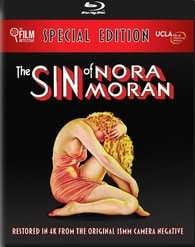 The Sin of Nora Moran
The Sin of Nora Moran
What is it? A young woman on death row recounts the fateful life that led her there.
Why see it? Pre-code films are just as the name implies, movies made before Hollywood began implementing moral standards in the form of ratings, and while several such movies are lost, more than a few survive. This powerful drama from 1933 has been recently rediscovered and restored, and it’s making its home video debut from The Film Detective with that 4K restoration and a featurette about the film and Johann.
Zita Johann stars as Nora and gives a searing performance as a young woman wronged by people and society. We follow her from childhood through her current predicament, and it’s through her memories that we see the truths and lies that make up her life. Johann’s Nora is no angel, but that’s kind of the point. Director Phil Goldstone’s film was ahead of its time in some ways as his use of flashbacks and fantasy, shadow and score, and the resulting film — a fast watch at only sixty-five minutes — captivates in unexpected ways. Some argue the film is one of the earliest noirs (despite falling nearly a decade before the sub-genre was officially born in 1941), and it’s easy to see why with its themes of futility and distrust, but there’s a hopefulness in Nora that challenges the reality of her grim surroundings. Seek this one out.
[Extras: New 4K restoration, documentary]
The Best
 20,000 Leagues Under the Sea
20,000 Leagues Under the Sea
What is it? Jules Verne’s classic novel comes to the screen in early and elaborate fashion.
Why see it? This 1916 adaptation cribs a bit from Verne’s The Mysterious Island as well, but the end result is a thrilling adventure that finds familiar beats crafted with ingenuity and passion. An early submarine movie — possibly the first? — is limited by technology, but director Stuart Paton takes great advantage of both effects and underwater photography to tell his tale. This new 4K restoration is an important one for silent cinema, although they all are arguably, and adventure fans should take note.
[Extras: New 4K restoration, commentary]
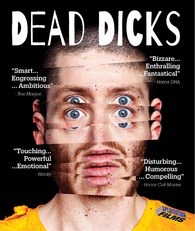 Dead Dicks
Dead Dicks
What is it? A young man’s suicidal desire has grotesquely weird consequences.
Why see it? Think a depressing Primer with a dash of Multiplicity and a handful of eye-level cocks, and then you’ll be in the right head space for this oddball indie. It requires a tolerance for penises and a vagina — a big one — but is worth the effort thanks in large part to a commitment to the ideas at play. Like this year’s Butt Boy, the film’s abrasively sophomoric surface holds deeper, darker, more sincere secrets.
[Extras: Commentary, video diaries, featurette]
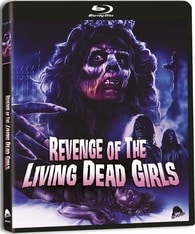 Revenge of the Living Dead Girls [Severin Films]
Revenge of the Living Dead Girls [Severin Films]
What is it? A trio of recently deceased milk-drinkers return for naughty and nasty shenanigans.
Why see it? This French shocker is something special. The gore is creative and vile, the nudity/sex is frequent and explicit (and occasionally vile), and the story manages some interesting choices that hold the attention in unexpected ways. It’s pure exploitation but with an interesting narrative at its core. The focus, though, is on all manner of fleshy antics that make this every bit an adult slice of horror. I’m also here for the ending which packages both a reveal and an abrupt demise into a tight few minutes. It’s crazy, but it’s great.
[Extras: Interviews]
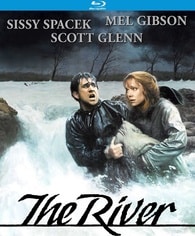 The River [KL Studio Classics]
The River [KL Studio Classics]
What is it? A family struggles to keep their farm.
Why see it? Sissy Spacek and Mel Gibson headline this inspiring drama about Americans fighting against both nature and a system that’s not designed to help the little people. Both actors are fantastic and earnest in their humanity, and Scott Glenn gives an equally strong turn as a not-so great guy. It’s a film about family and community, about working hard to achieve your dreams, and about the cost of being a good person. It’s no “prestige drama,” and is instead an earthy look at real people through a dramatic lens. It’s good stuff.
[Extras: Commentary]
 The Shakedown
The Shakedown
What is it? A not-so good guy becomes a great man.
Why see it? The story here concerns a boxer, a thug and a loser, who finally finds himself after falling for a woman and an orphan child. The more recent comparison here is to films like The Champ (1979) or even Real Steel (2011), but this silent film predates them both by multiple decades. It’s a tear-jerker of sorts, depending on your taste for silents, as director William Wyler squeezes plenty of emotion along the way. More impressively, though, are the boxing scenes which manage some thrills of their own. Kino’s disc features a print restored by Universal Pictures and is worth the pick up for fans of film history.
[Extras: New 4K restoration, commentary, booklet]
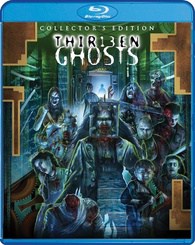 Thirteen Ghosts [Scream Factory]
Thirteen Ghosts [Scream Factory]
What is it? A family inherits a high tech house and its supernatural contents.
Why see it? Dark Castle Entertainment may have gone on to dwindle any and all good will with sub-par thrillers, but they knocked it out of the park early on with titles like this. It’s a remake of a William Castle film, and it’s a bold, loud, colorful blast of nightmarish visions, grim laughs, and adult shenanigans. The ghosts are legit creepy at times too despite being the antithesis of what traditionally counts as spooky, and it’s just good fun all around. Scream Factory adds some new interviews into the extras making this a worthwhile pick-up for fans.
[Extras: Interviews, commentary with director, featurettes]
The Rest
Gundala
What is it? A boy becomes a man becomes a superhero.
Why see it? This Indonesian action film is adapted from a popular comic book, and fans of Marvel and DC will see a lot of similarities. That’s not a knock either, as all superhero stories share threads, and this film’s studio intro showcasing dozens of local heroes is a reminder that every culture has its own heroes. All of that said, the film lacks those bigger films’ budget meaning things are scaled down. There’s fun to be had with some solid fight scenes, though.
[Extras: Video logs, featurette]
Hannibal Brooks [KL Studio Classics]
What is it? A group of POWs transport an elephant through enemy territory.
Why see it? Pairing Oliver Reed with Michael J. Pollard is just peak 60s weirdness, and adding an elephant into the mix is even stranger. It fits, though, as Michael Winner’s film is equally odd in tone and execution. War action and romance collide with buddy comedy and animal shenanigans, and the entirety rides on the cast’s charisma and character. That tonal shakiness is most evident in the final minutes when a major player dies, others escape, and we end with everyone laughing while on screen text declares that everyone lived happily ever after. It’s something.
[Extras: New 2K master]
Hawaii Five-O – The Final Season
What is it? The tenth and final season of the show that gave up on its two best characters after season seven.
Why see it? This reboot of the popular classic succeeded early on at blending solid action scenes with interesting characters. The two leads are, of course, the least interesting, but the show found charisma is Grace Park and Daniel Dae Kim. It’s been a lesser experience since they left at the end of season seven, but fans will enjoy the show’s wrap up of its main ongoing story lines and threads.
[Extras: Crossover episode with Magnum P.I., featurette, interview, gag reel, deleted scenes]
James Cameron’s Story of Science Fiction
What is it? James Cameron interviews people about science fiction films.
Why see it? It’s been eleven years since James Cameron’s last feature film — and arguably twenty-three since his last good one — so any new Cameron content is good news. Here he sits across from various talents including directors, actors, scientists, theorists, writers, and more to discuss the never-ending allure of science fiction. It’s at times interesting, but he also spends too much time with the actors. We get it, they’re name draws, but their perspective is rarely as engaging or interesting as the actual creators and thinkers.
[Extras: Extended interviews]
Lorenzo’s Oil [KL Studio Classics]
What is it? A family struggles to find a cure for what ails their son.
Why see it? George Miller remains best known for directing the classic franchise involving a talking pig, but he also dabbled in smaller dramas including this tear-jerker based on a true story. Nick Nolte and Susan Sarandon headline as the desperate parents who risk everything — careers, their marriage, friendships — to save their son. It’s well-acted and at times melodramatic, and is worth a watch for fans of acting and drama.
[Extras: Commentary]
Million Dollar Mermaid [Warner Archive]
What is it? A swimmer trades in water for fame.
Why see it? Esther Williams is best-known for this big, bright spectacle of a film. It’s based on a real talent who took choreographed aquatic shenanigans to new heights, and the film brings her story to vibrant life through big set-pieces and numbers. It’s as far from the kind of films being made today as you can get, and Warner’s new Blu makes it pop off your television screen.
[Extras: Short film, cartoon, radio interview]
Mondo Balordo [Severin Films]
What is it? A mondo film about so-called “weird” behaviors around the world.
Why see it? The mondo films are not something I’ve ever really understood, and they feel every bit from a time and place far removed from the here and now. Back then, though, they arguably introduced adventurous audiences to people and places they’d otherwise never see or visit. This entry’s highlight is narration from the great Boris Karloff, but the visuals on display rarely excite. Dancers, prostitutes, a little person overflowing with energy and talent, and more play out before our eyes as part of the “documentary,” but it all feels fairly rote.
[Extras: Feature film The Orientals (1960)]
NCIS – The Seventeenth Season
What is it? The seventeenth season!
Why see it? Other networks wish they had the secret to programming long-running series for your dad. This Mark Harmon-led action/drama has spawned two spin-offs centered in Los Angeles and New Orleans, and the main show keeps chugging along. What’s the secret? Consistency is what I’d argue. It never goes too low, never aims too high, and delivers perfectly okay material week after week. Harmon has always been a reliable presence, and the show uses that well to center the action and character drama around.
[Extras: Featurettes]
The Other Lamb
What is it? A small cult crumbles.
Why see it? Cult films tend to fall into a couple categories — the frightening and the unsettling. This indie hews closer to the latter with its creepy male leader of an otherwise female cult, but it never quite succeeds in captivating or upsetting viewers. It’s well-acted and beautifully shot, but the expected beats occur with little deviation.
[Extras: None]
The Public Eye [KL Studio Classics]
What is it? A tabloid photographer find crime, corruption, and romance through his lens.
Why see it? Joe Pesci used to act a lot more, and while many of his films are forgettable comedies, this effort leans more serious. It’s 40s set and sees him fitting right in with the city’s fast-talking muck-rakers and crooks. Director Howard Franklin (Quick Change, 1990) makes good use of Pesci and the period setting, and while the story isn’t quite as good it’s a solid time for Pesci fans.
[Extras: Commentary with director]
Raggedy Man [KL Studio Classics]
What is it? A single mother struggles in a small nowhere town.
Why see it? Sissy Spacek had roles like this on lock down through the early 80s — when she didn’t lose them to Jessica Lange — but here she’s allowed a bit more pep in her step. Her character is downtrodden but stands tall all the same, and she fights back against expectations and chauvinism too. Eric Roberts lands a rare good guy role, and Henry Thomas once again plays an incredibly sincere young boy. It’s an engaging and at times suspenseful watch and far from the “poverty porn” it might seem like at first.
[Extras: Commentary]
The System [KL Studio Classics]
What is it? A group of young men pursue women and find both trouble and love.
Why see it? The first of Oliver Reed’s collaborations with director Michael Winner (another is above), this playful blend of comedy and drama feels very particular in the 60s UK as a time and a place. Reed is charismatic as hell, and his character’s arc engages even as the others feel more basic in their beats. It’s a pretty good film made better through his performance.
[Extras: Commentary, featurette]
The Wild, Wild World of Jayne Mansfield [Severin Films]
What is it? A Hollywood starlet’s death is turned into grind for the machine.
Why see it? One of the stranger exploitation/mondo movies to come out of the 60s, this romp pairs the expected “craziness” of people acting wild with footage of Jayne Mansfield both before her death and after. The latter involves real-life footage from her crash, which, when paired with a narrator pretending to be Mansfield becomes even more ghoulish. That said, the film itself, like most mondo flicks, never really gets all that nutty. It’s more of an observation on the people and the times.
[Extras: Interview, bonus feature Wild Wonderful Italians (1966)]
Also out this week:
Graveyard Shift [Scream Factory], The Outsider – The Complete First Season, The Tenant [Scream Factory], Wonder Woman – The Complete Collection






















 The Sin of Nora Moran
The Sin of Nora Moran 20,000 Leagues Under the Sea
20,000 Leagues Under the Sea Dead Dicks
Dead Dicks Revenge of the Living Dead Girls [Severin Films]
Revenge of the Living Dead Girls [Severin Films] The River [KL Studio Classics]
The River [KL Studio Classics] The Shakedown
The Shakedown Thirteen Ghosts [Scream Factory]
Thirteen Ghosts [Scream Factory]


